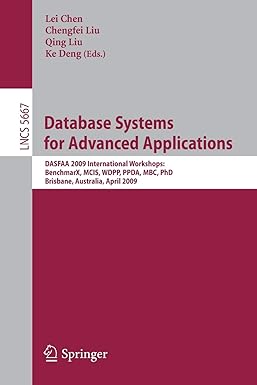Answered step by step
Verified Expert Solution
Question
1 Approved Answer
Consider a nondeterministic finite automaton M1 = (Q, , , q0, F1). Define a (new) nondeterministic finite automaton M2 = (Q, , , q0, F2)
Consider a nondeterministic finite automaton M1 = (Q, , , q0, F1). Define a (new) nondeterministic finite automaton M2 = (Q, , , q0, F2) with F2 = Q F
Prove, or disprove (with explicit counter-example and detailed explanation), the following statement: the language L(M2) is the complement of the language L(M1) (that is, L(M2) = L(M1)).
Step by Step Solution
There are 3 Steps involved in it
Step: 1

Get Instant Access to Expert-Tailored Solutions
See step-by-step solutions with expert insights and AI powered tools for academic success
Step: 2

Step: 3

Ace Your Homework with AI
Get the answers you need in no time with our AI-driven, step-by-step assistance
Get Started


